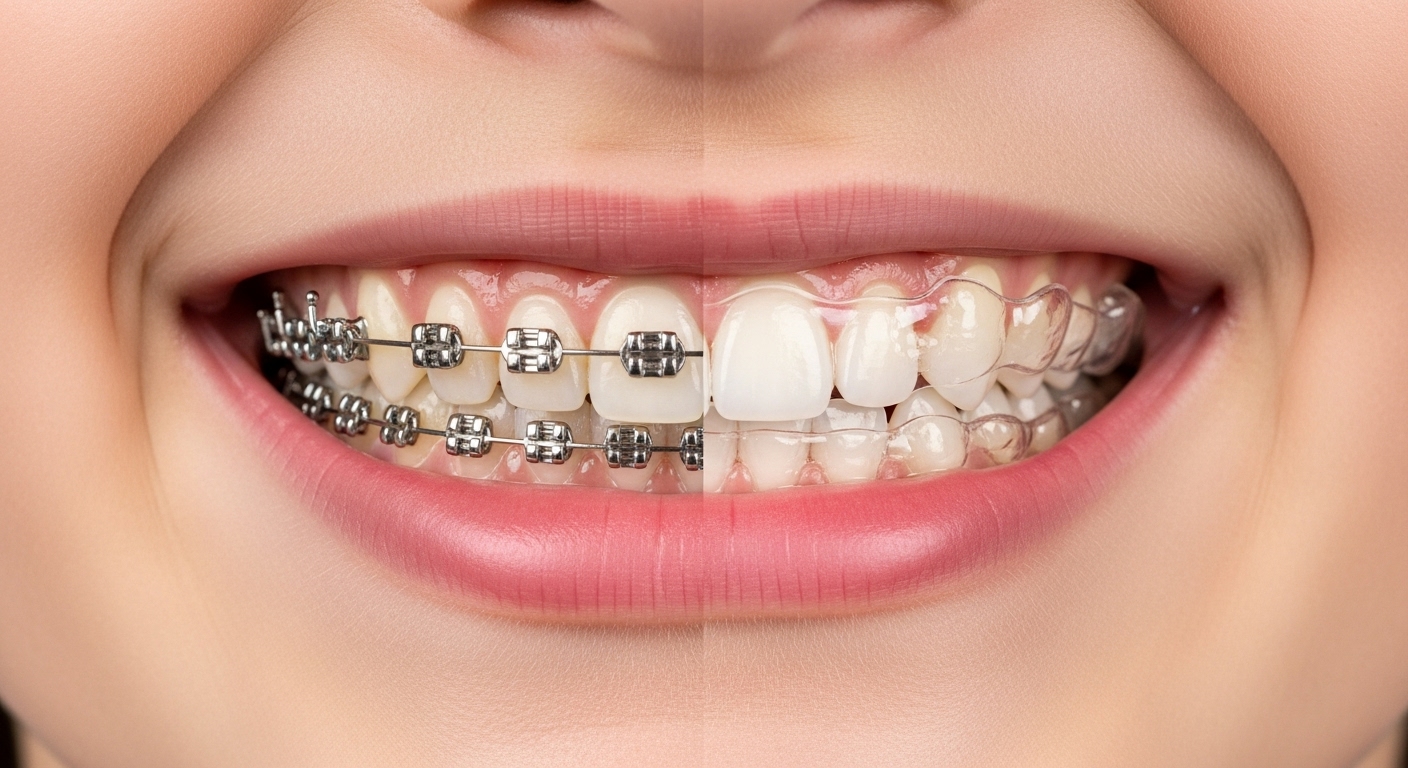Invisalign or Braces: Which is Better for You? A Full Breakdown
Deciding on an orthodontic treatment is a significant step. For many years, conventional braces were the standard procedure. Now, modern solutions like Invisalign have transformed the field of orthodontics, particularly for adults. So, when faced with the choice of Invisalign or braces, which path should you take? This comprehensive breakdown will help clarify your decision.
The Conventional Method: Traditional Braces
Traditional braces represent the most established orthodontic technique. The concept is straightforward: brackets are affixed to each tooth and linked by a metal archwire, which applies the gentle pressure needed to reposition the teeth.
The Different Kinds of Braces
- Metal Braces: This remains the most durable and budget-friendly choice. Its primary disadvantage is its high visibility.
- Ceramic Braces: Offering more discretion, these feature tooth-colored brackets. They are a favored aesthetic choice but are more delicate and carry a higher cost than their metal counterparts.
- Lingual Braces: With this method, brackets are attached to the inner surface of the teeth, rendering them entirely invisible. It is the most discreet but also the costliest option, and may lead to some initial tongue irritation.
The Modern Solution: Invisalign Clear Aligners
The Invisalign system employs a fundamentally different methodology. It forgoes brackets and wires in favor of a series of removable, custom-fitted clear aligners. Each tray is worn for one to two weeks before progressing to the next, gradually guiding teeth into their desired alignment.
Invisalign vs. Braces: A Direct Comparison
To make an informed decision, it's essential to evaluate both systems based on the factors that are most important to you.
- Aesthetics: A definite victory for "invisible" solutions. Lingual braces are perfectly concealed, with Invisalign as a close second, being nearly unnoticeable. Ceramic braces offer a subtle appearance, whereas metal braces are the most conspicuous. Learn more about the mechanics of Invisalign in our "How Does Invisalign Work?" article.
- Comfort: Invisalign holds the edge. The lack of metal significantly minimizes irritation to the inner cheeks and lips. Any reported discomfort is typically a mild pressure when transitioning to a new aligner set.
- Diet: This is a key advantage for Invisalign. Because the aligners are taken out for meals, there are zero dietary restrictions. With braces, it's necessary to steer clear of hard or sticky foods.
- Hygiene: Invisalign has the advantage here as well. Brushing and flossing are considerably easier, lowering the risk of cavities and discoloration.
- Compliance: Braces have the upper hand. Being fixed in place means you can't forget them. The effectiveness of Invisalign hinges on the user's discipline to wear the aligners for the recommended 22 hours per day.
- Cost: Metal braces are typically the most economical choice. The price of Invisalign is frequently on par with that of ceramic or lingual braces.
- Effectiveness: Both treatments are highly effective. Braces are still the gold standard for the most severe surgical cases, but Invisalign can now address a wide range of malocclusions, thanks to features like attachments.
Conclusion: What's the Right Appliance for You?
A single "best" treatment does not exist. Your choice will hinge on your individual priorities:
- If discretion and comfort are your main concerns, Invisalign is probably your ideal match.
- If you have a tighter budget and are not bothered by the appliance's appearance, metal braces are a superb choice.
- If you seek a balance between aesthetics and cost, ceramic braces could be the answer.
- If you worry about compliance but demand complete invisibility, lingual braces are a viable option to explore.
The wisest step is to review these benefits and drawbacks with your orthodontist. They will help you select the solution that aligns best with your clinical needs and personal lifestyle.
Ready to start your Invisalign journey?
Find a certified Invisalign provider near you using our interactive map of orthodontists in the US.
Find a Provider
